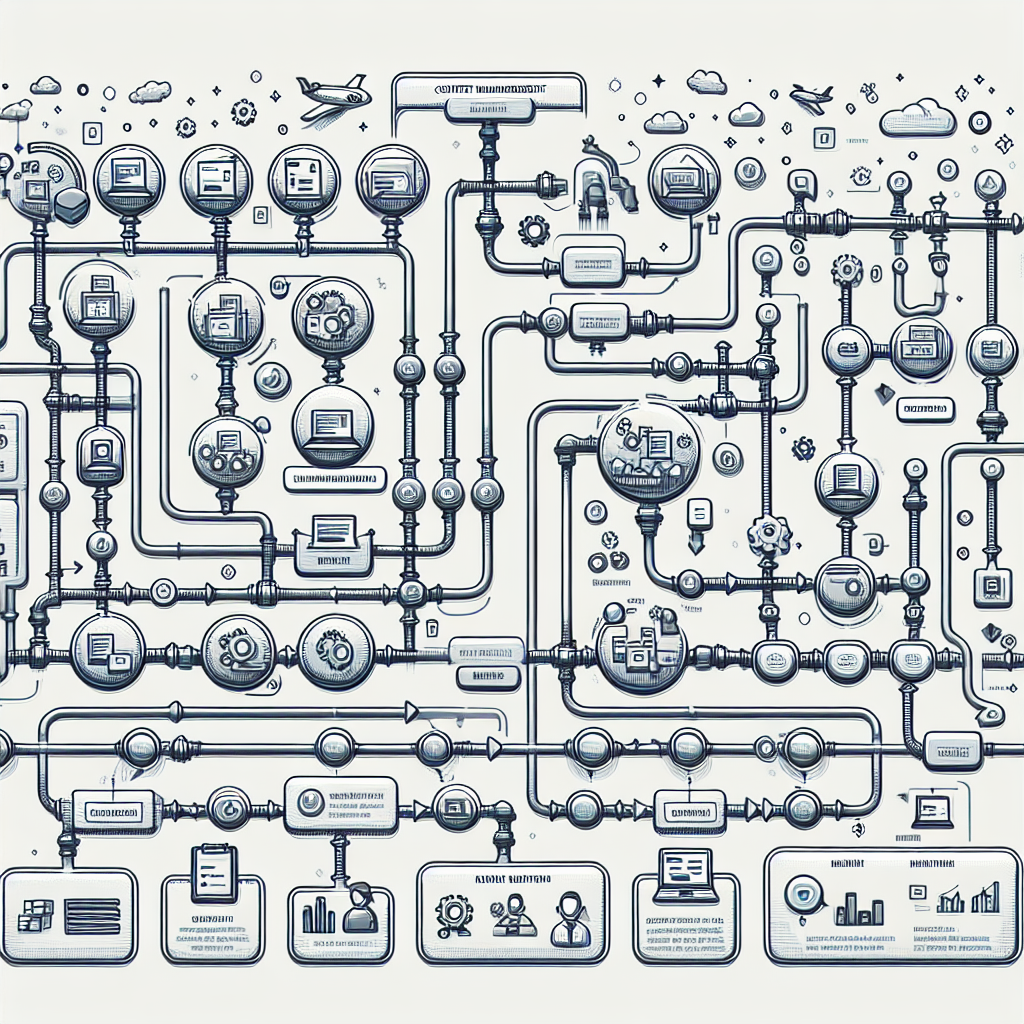Introduction:
Today, we have the pleasure of interviewing Adam Willhoeft, a leading expert in digital content management with over a decade of experience in the industry.
Adam currently serves as the Chief Content Officer at 1UP Media, where he has led numerous successful projects and implemented innovative content strategies. A frequent speaker at industry conferences, Adam was chosen for this interview due to his deep knowledge and influential role in shaping content workflows and pipelines.
In our interview, we will delve into the intricacies of content pipelines and workflows, their importance in content management, and recent trends affecting digital content creation and distribution.
Questions and Answers:
Q: Can you start by telling us about your background and how you got into content management?
A: I began my career in journalism before transitioning to digital content creation. The shift was driven by my keen interest in technological advancements and their impact on storytelling. Over the years, I’ve worked with various media outlets, gradually moving into leadership roles where I could shape content strategies on a larger scale.
Q: For organizations in the decision phase, what key factors should they consider when choosing content pipeline and workflow solutions?
A: Organizations should look at the scalability of the solution to handle growing content demands, the integration capabilities with existing tools, and the level of automation it offers. It’s also crucial to consider the user-friendliness of the interface, the quality of customer support, and the flexibility to customize workflows to fit unique needs.
Q: How do content pipelines and workflows impact the overall efficiency and effectiveness of a content strategy?
A: Efficient content pipelines and workflows streamline the entire content creation process, reducing bottlenecks and ensuring timely publication. They enhance collaboration across teams, maintain consistency in content quality, and provide clear accountability. This leads to higher productivity, better resource management, and ultimately, a more effective content strategy.
Q: What are some advanced strategies or tools that can enhance content pipelines and workflows for decision-makers?
A: Leveraging AI-driven tools for content optimization, such as predictive analytics for audience engagement, can be a game-changer. Integrating project management tools that offer real-time tracking and reporting can also enhance efficiency. Additionally, employing a robust content management system (CMS) that supports multi-channel distribution can significantly improve workflow integration.
Q: Could you share an example of a successful decision-making process for implementing a new content pipeline or workflow at 1UP Media?
A: Absolutely. At 1UP Media, we recently evaluated and implemented a new content management platform that seamlessly integrates with our existing tools. The decision was based on thorough testing, stakeholder feedback, and a clear understanding of our long-term content strategy goals. This new system has not only improved our workflow efficiency but also enhanced our ability to deliver personalized content at scale.
Q: How do you foresee the role of AI and machine learning evolving in content pipelines and workflows?
A: AI and machine learning will continue to revolutionize content pipelines by providing real-time data-driven insights, automating repetitive tasks, and personalizing content delivery. These technologies will enable more dynamic and adaptive workflows, allowing for continuous optimization based on performance metrics and audience behavior.
Q: What final advice would you give to organizations in the decision phase of selecting content management solutions?
A: Focus on solutions that offer flexibility, scalability, and robust integration capabilities. Ensure that the platform provides comprehensive training and support to facilitate smooth adoption. It’s also important to involve all relevant stakeholders in the decision-making process to ensure the chosen solution aligns with the overall business objectives and content strategy.
Conclusion:
Throughout this interview, Adam Willhoeft has shared invaluable insights into the importance of content pipelines and workflows in ensuring the smooth and efficient production of digital content. From his experiences, it’s clear that embracing new technologies and fostering effective collaboration are keys to success in this field.
We’d like to thank Adam for his time and for sharing his expertise with us. For those interested in learning more, you can follow Adam on LinkedIn at Adam Willhoeft’s LinkedIn or explore his recent articles on content strategy at 1UP Media’s blog.
This interview has offered a deeper understanding of the complexities and innovations involved in content pipelines and workflows, providing valuable insights for professionals and enthusiasts alike.
Related Posts:
Exploring Content Pipelines: Insights from Jane Doe (98.98% match)
Content Pipelines and Workflows Explained (93.91% match)
Optimizing Content Pipelines and Workflows (93.49% match)

